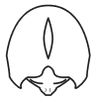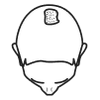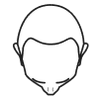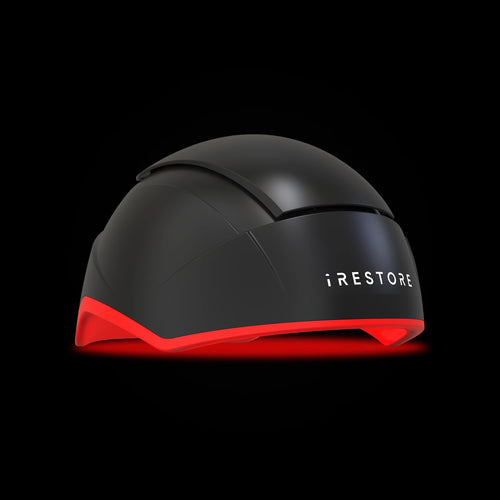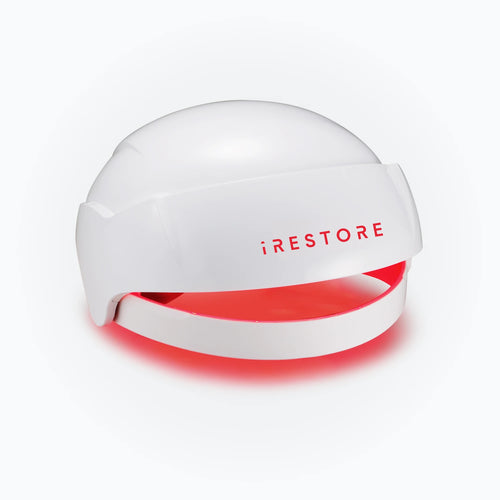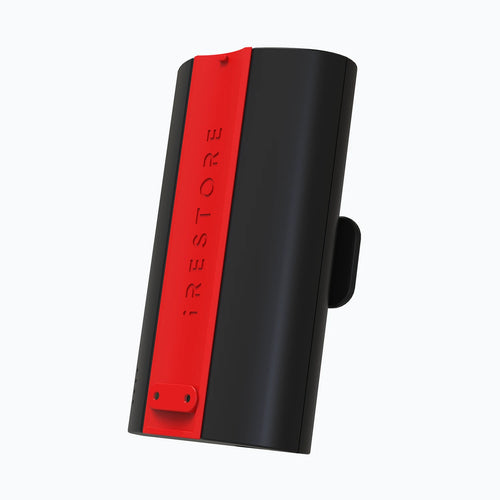Hair shedding happens to everyone, but when you start losing more strands than usual, it can feel unsettling. Seeing extra hair in the shower drain or on your pillow can quickly affect your confidence and even cause stress, which may worsen the shedding.
While some daily shedding is part of the natural hair cycle, excessive loss often signals an underlying issue such as stress, hormonal changes, or nutrient deficiencies. The encouraging news is that most cases are reversible with the right approach. One of the safest and most effective solutions available today is red light therapy, a science-backed treatment that stimulates natural regrowth without drugs or invasive procedures.
The Hair Shedding Cycle
Hair shedding is a natural part of the hair growth cycle, where old or damaged hairs fall out to make way for new growth. On average, most people lose 50 to 100 strands per day as old hairs fall out to make way for new ones. This cycle has three main stages:
-
Growth (Anagen) – when your hair is actively growing.
-
Transition (Catagen) – when growth slows, and the hair begins to detach from its follicle.
-
Resting (Telogen) – when the hair eventually sheds, and a new strand starts forming underneath.
When shedding stays within this daily range, it’s simply your body renewing your hair. But if you start noticing more hair in your brush, shower drain, or on your pillow than usual, it may be a sign that your growth cycle is being disrupted.
The good news is that in many cases, this type of excessive shedding can be addressed by restoring balance to your scalp and follicles. Treatments like red light therapy with the iRESTORE Laser Hair Growth System help encourage follicles back into the growth phase, reduce daily shedding, and support healthier, thicker hair over time.
Common Reasons of Hair Shedding
Excessive hair shedding usually does not happen without a reason. Identifying what is causing your hair to fall out more than usual is the first step toward restoring its strength, fullness, and natural cycle. Below are some of the most common contributors to hair shedding.
-
Stress and Trauma
Physical or emotional stress can trigger a condition called telogen effluvium. This occurs when stress forces hair follicles to enter the resting phase too early, causing more strands to shed than normal. Common stress triggers include:
-
A major life event, such as divorce, loss of a loved one, or job change
-
Illness, surgery, or physical injury
-
High levels of anxiety, panic attacks, or sleep deprivation
The good news is that hair often begins to recover within a few months once stress levels decrease and balance is restored.
-
Hormonal Changes
Fluctuations in hormone levels are a frequent cause of hair shedding, especially in women. Hormonal imbalances can disrupt the growth cycle and lead to visible thinning. Common examples include:
-
Postpartum changes after childbirth
-
Menopause and a drop in estrogen levels
-
Thyroid disorders such as hypothyroidism or hyperthyroidism
In many cases, these issues can be managed with medical support and lifestyle adjustments.
-
Nutrient Imbalance
Your body requires a steady supply of nutrients to support healthy hair growth. When certain vitamins or minerals are lacking, hair is often one of the first areas to be affected. Key nutrients linked to hair shedding include:
-
Iron: Low iron is a leading cause of hair thinning, especially in menstruating women.
-
Protein: Hair is made of keratin, a protein that depends on sufficient intake to stay strong.
-
Biotin and Zinc: These support the health of hair follicles and the production of new strands.
A nutrient-rich diet or targeted supplements may help reverse this type of hair loss.
-
Lifestyle Habits
Certain everyday choices can also weaken your hair and increase shedding. These include:
-
Extreme dieting or poor overall nutrition
-
Frequent use of heat tools or chemical treatments
-
Tight hairstyles that pull on the scalp
-
Poor sleep and lack of physical activity can reduce blood flow to the scalp
Changing these habits early can make a lasting difference in the health and strength of your hair.
Once you understand the root causes, it’s time to explore an effective, science-backed solution: red light therapy.
Red Light Therapy: A Proven Way to Reverse Hair Shedding
Red light therapy, also known as Low Level Laser Therapy (LLLT), is becoming one of the most trusted and effective ways to reduce hair shedding and support natural regrowth without relying on medications or invasive treatments. Red light therapy uses safe, low-intensity lasers or LED lights that gently penetrate the scalp. This process helps stimulate hair follicles by increasing blood circulation, delivering more oxygen and nutrients, and boosting energy production at the cellular level. As a result, it can help awaken weakened or dormant follicles.
Here’s how it helps:
-
Increases blood circulation to the scalp so follicles get more oxygen and nutrients
-
Energizes dormant follicles to re-enter the growth (anagen) phase
-
Reduces inflammation, which is often a hidden contributor to hair shedding
-
Strengthens existing hair by improving the quality of hair shafts
-
Safe for men and women and effective on various types of hair thinning
Unlike pills or topical treatments, red light therapy works at the cellular level enhancing how your follicles operate from the inside out.
Supported by Science:
Multiple clinical studies have shown that LLLT can:
-
Improve hair density and fullness
-
Extend the growth phase of the hair cycle
-
Minimize excessive daily hair shedding
-
Reactivate follicles that have stopped producing visible hair
Safe and Easy to Use:
Red light therapy offers a safe, comfortable experience that fits into your routine. It is:
-
Cleared by the FDA for treating hair loss
-
Completely pain-free and gentle on the scalp
-
Designed for both men and women
-
Available in wearable, at-home devices like iRESTORE
Instead of just covering up hair loss, red light therapy works to improve the health of your scalp and hair from the inside out.
Benefits of Using Red Light Therapy for Hair Shedding
Choosing red light therapy to manage hair shedding comes with a range of powerful benefits. Unlike temporary fixes or harsh treatments, it supports your scalp and follicles naturally for long-term results.
Promotes Thicker, Healthier Hair
By energizing the follicles and boosting circulation, red light therapy helps produce stronger, thicker strands that are less prone to breakage and fall.
Reduces Excess Shedding
Consistent use can shorten the resting phase of the hair cycle and extend the growth phase, helping reduce how much hair you shed daily.
Non-Invasive and Drug-Free
There are no needles, chemicals, or prescriptions involved. Red light therapy is gentle on the body and safe for long-term use with no known side effects.
Convenient and Comfortable
With wearable devices like the iRESTORE Laser Hair Growth System, you can treat your hair from the comfort of home in just 25 minutes per session, a few times per week.
Backed by Clinical Results
Red light therapy is supported by multiple clinical trials and trusted by dermatologists as a safe and effective hair restoration option for both men and women.
Boosts Confidence
When hair shedding slows and visible improvement starts, many users feel more confident, energetic, and empowered in their daily lives.
How to Use iRESTORE for Best Results
To get the most out of red light therapy, consistency and correct usage are key. The iRESTORE Laser Hair Growth System is designed to make this process simple, effective, and easy to fit into your lifestyle.
Step-by-Step Usage Guide:
1. Use it 3 to 4 times per week
Each session lasts about 25 minutes. The device automatically shuts off when the treatment is complete.
2. Start with clean, dry hair
Make sure your scalp is free of excess oils, styling products, or buildup so the light can penetrate effectively.
3. Sit back and relax
While wearing the iRESTORE device, you’re free to read, watch a show, or scroll through your phone without pain or disruption to your routine.
4. Track your progress
Take photos every 2 to 4 weeks to monitor changes. Hair regrowth takes time, but many users start seeing reduced shedding and visible improvements in 3 to 6 months.
5. Stay consistent
Missing sessions can slow results. Try setting reminders or making it part of your evening routine to stay on track.
Start Your Journey to Healthier Hair Today
Hair shedding can feel frustrating and overwhelming, but with the right tools and knowledge, you can take back control. Red light therapy offers a safe, science-backed solution that helps reduce shedding, reactivate follicles, and support long-term hair health all from the comfort of your home.
Whether you're just starting to notice increased shedding or looking to rebuild thinning areas, iRESTORE makes it easy to take the first step toward fuller, thicker, healthier hair.With the FDA-cleared iRESTORE Laser Hair Growth System loved by 500K+ customers, you’re not just treating hair loss. You’re investing in your confidence, your appearance, and your overall well-being. Confidence restored.
Frequently Asked Questions (FAQs)
1. How long does it take to see results with red light therapy?
Most users begin to notice a reduction in hair shedding within 8 to 12 weeks. Visible regrowth typically starts around the 3 to 6 month mark with consistent use.
2. Is red light therapy safe for everyone?
Yes, red light therapy is generally safe for both men and women. It’s non-invasive, pain-free, and has no known serious side effects. However, those with photosensitivity or specific scalp conditions should consult a healthcare provider before starting.
3. Do I need to use red light therapy forever?
To maintain results, ongoing use is recommended. Think of red light therapy like brushing your teeth, consistent maintenance supports long-term health and prevents regression.
4. Can I use red light therapy with other hair treatments?
Yes, it’s safe to combine red light therapy with most other treatments, such as topical serums, DHT blockers, supplements, or medicated shampoos. Using it alongside a well-rounded routine may enhance your results.
5. What makes iRESTORE different from other devices?
iRESTORE is FDA-cleared, clinically studied, and designed for ease of use at home. Its helmet-style design provides full scalp coverage and allows for hands-free sessions that fit seamlessly into your routine.




